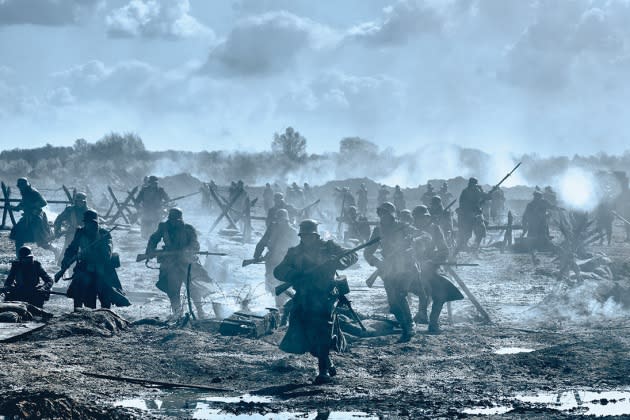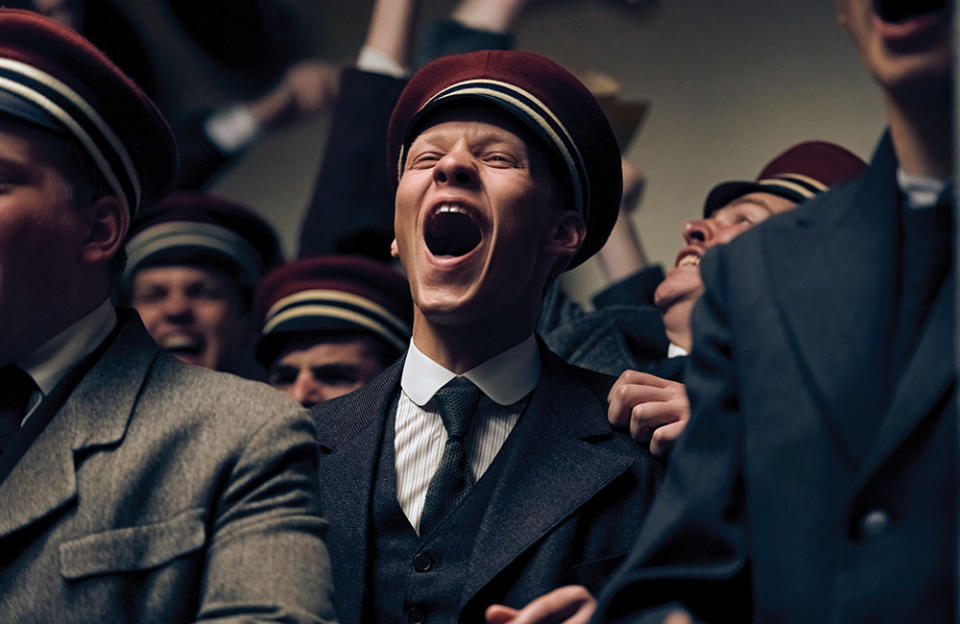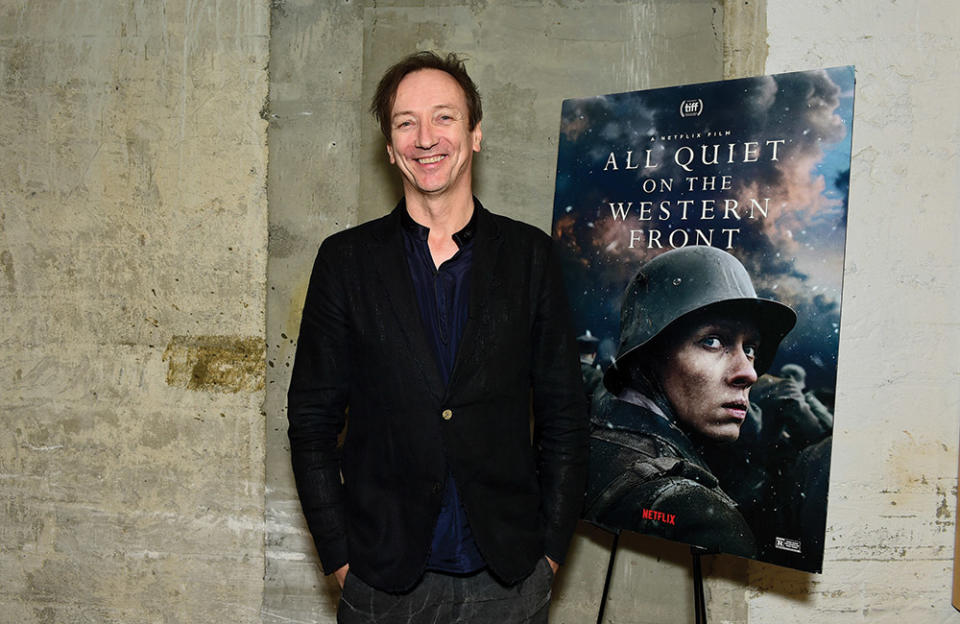How ‘All Quiet on the Western Front’ Composer Scored a Soldier’s Musical Themes
- Oops!Something went wrong.Please try again later.
- Oops!Something went wrong.Please try again later.
- Oops!Something went wrong.Please try again later.

Composing the score for a war film can be, apologies for the metaphor, a minefield. Go too heavy on the orchestral oomph — all soaring strings and booming base — and you can quickly swing into schmaltz. Go too small and minimalist, and the onscreen explosions can overpower your music. Plus, there’s the danger of familiarity, of echoing the grand and epic scores of war films past.
So, when director Edward Berger asked his regular composer, Volker Bertelmann, to write a score for his antiwar drama All Quiet on the Western Front, he told him to break all the rules.
More from The Hollywood Reporter
Netflix Making Doc Series About Convicted Pedophile Gary Glitter
Netflix's Revenue in Asia-Pacific Will Grow 12 Percent to $4B in 2023, Says Research Group
Rihanna's Son Is Not Happy That "His Sibling Is Going to the Oscars and Not Him"
“I said, ‘I want something different, something we’ve never heard before,’ ” says Berger, “then, and this is almost the most important thing: I said, ‘I want you to destroy the images onscreen. Don’t beautify or sentimentalize.’ [I wanted] a sound that feels like it’s coming from inside [lead character] Paul Bäumer’s stomach. I want the sound of fear, of hatred, of rage, of what a soldier feels when he has to kill in order to survive.”
“Something different” is pretty much Bertelmann’s M.O. The German pianist, who records and performs under the name Hauschka, is part of a cadre of experimental musicians who came up in the Berlin indie electronics scene and have quietly started to change the sound of Hollywood movies. Others from that milieu include Oscar-winning composer Hildur Gudnadóttir (Joker, Tár) and the late Jóhann Jóhannsson (Arrival, Sicario, The Theory of Everything), a two-time Oscar nominee.
Bertelmann is best known for his Oscar-nominated work on Garth Davis’ Lion and his score for Francis Lee’s Ammonite, which received an ASCAP nom for score of the year (both were co-written with Dustin O’Halloran). In Lion, the composers stripped out horns and strings to deliver a piano-driven sound that managed to be emotional while never being predictable. For Ammonite, a small, sparingly used chamber orchestra forms the film’s emotional core.
“Coming from the independent scene, I have a different approach to composing,” says Bertelmann. “It’s very intuition-driven, just trying something out and seeing what happens. Like, if I want a bass drum sound, instead of getting an orchestra to record it, or going through all the recorded bass drum loops to find just the right one, I’ll put contact mics on the wall and bang on them to see if that works.”

Bertelmann created the signature three-tone motif that echoes through All Quiet — a thundering dom-dom-DOM! sounding like a trumpet of doom — by picking up his grandmother’s old harmonium.
“When I played it, pressing the paddles and using these old panels on the side with my knees, it created this weird wooden sound,” he recalls. “You could hear all the technical bits from the materials of the machine creating the music. Normally, in a classical recording, you’d work to take those out. I amplified them. I stuck microphones inside the harmonium, underneath it, on the wood, everywhere, to capture that sound.”
The result is both old and modern, like a wooden turn-of-the-last-century synthesizer, and — as it plays over post-battle scenes, as boots and uniforms are stripped off corpses, thrown in piles and then trucked off to be washed, repaired and handed out to a new crop of cannon-fodder recruits — perfectly evokes the horrifying machinery of war.
But when intimate emotion is called for, as in a late wrenching scene when Bäumer (Felix Kammerer) lies next to a French soldier he has brutally stabbed, listening to him slowly die, Bertelmann’s score can go quiet.
“For that scene, I used this really fragile string motif, recording them in a clear pure way,” he says. “When Edward heard it, he said it was too emotional and overpowering the scene. But I thought we needed that feel, so I put a filter on the whole instrumentation, just cut off the high end. It made it sound a bit like the music is coming from underneath a blanket. It’s muffled, but the emotion still comes through.”

For the battle scenes, Bertelmann worked closely with the film’s sound designer, Frank Kruse, to harmonize his score with the rat-a-tat-tat of the machine guns and the monstrous thumps of the exploding shells.
“With fights and battle scenes, the music can very easily get swamped by all the war sounds,” he says, “so we tried to find the frequencies for each other’s instruments and complement, not compete. Say there were explosions. That could be the bass drums. So I wouldn’t use bass on that section, or I’d go even lower, deeper in tone, below the explosions. Or for an ambush scene, in place of the main rhythm portion, I use the specific metal sounds of the gunfire.”
Bertelmann’s favorite piece of music in the All Quiet score, he says, comes in the final scene, as Bäumer, mortally wounded, climbs out from underground to see the sky one last time. For the piece, called “Making Sense of War,” the composer returns to his three-tone motif, but this time classically orchestrated.
“It sounds a little bit like an opera,” he says. “It gives this moment of clarity and pause, where we question everything that we’ve seen, and what the whole point [of war is].”
This story first appeared in a Feb. stand-alone issue of The Hollywood Reporter magazine. To receive the magazine, click here to subscribe.

